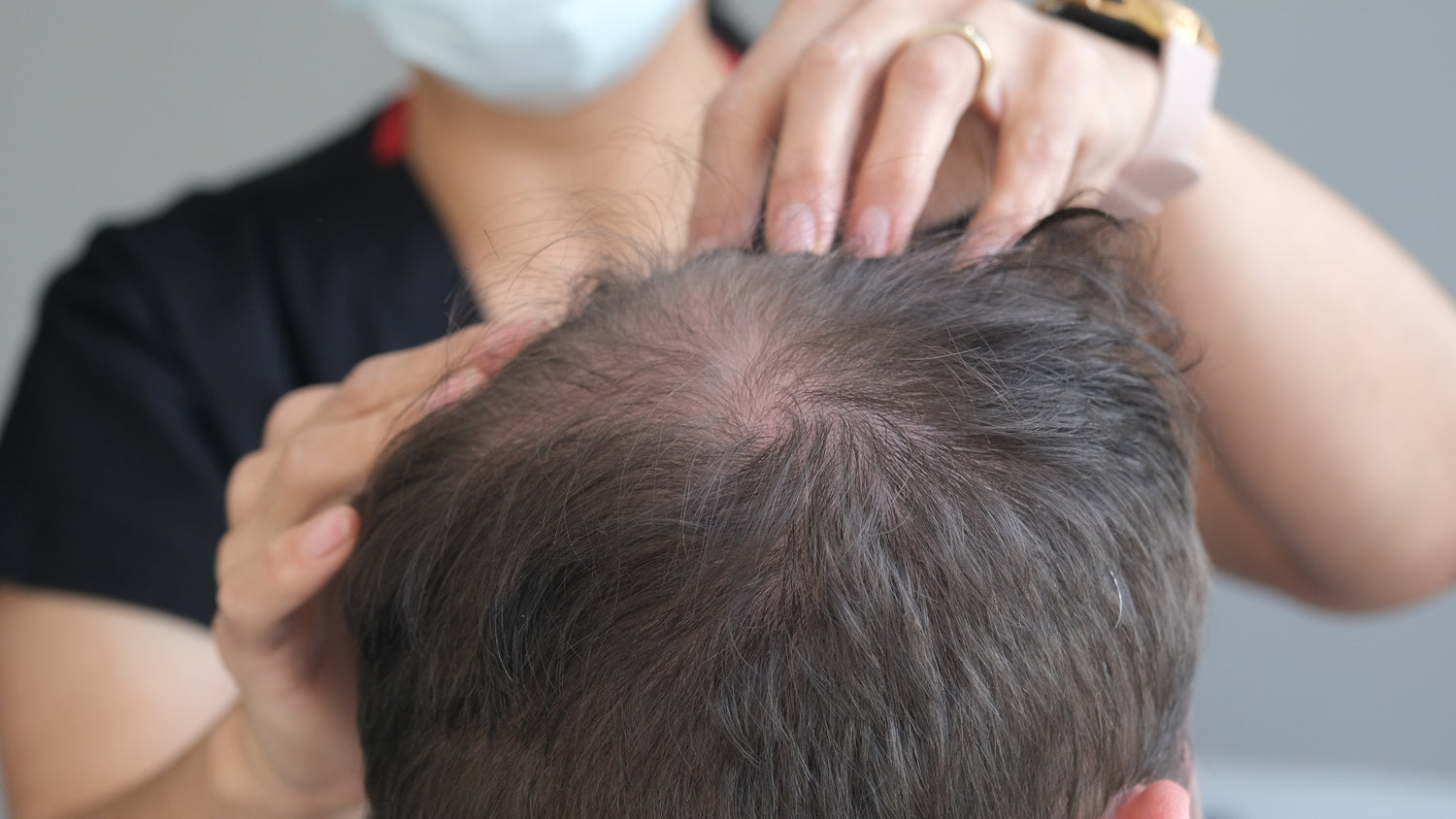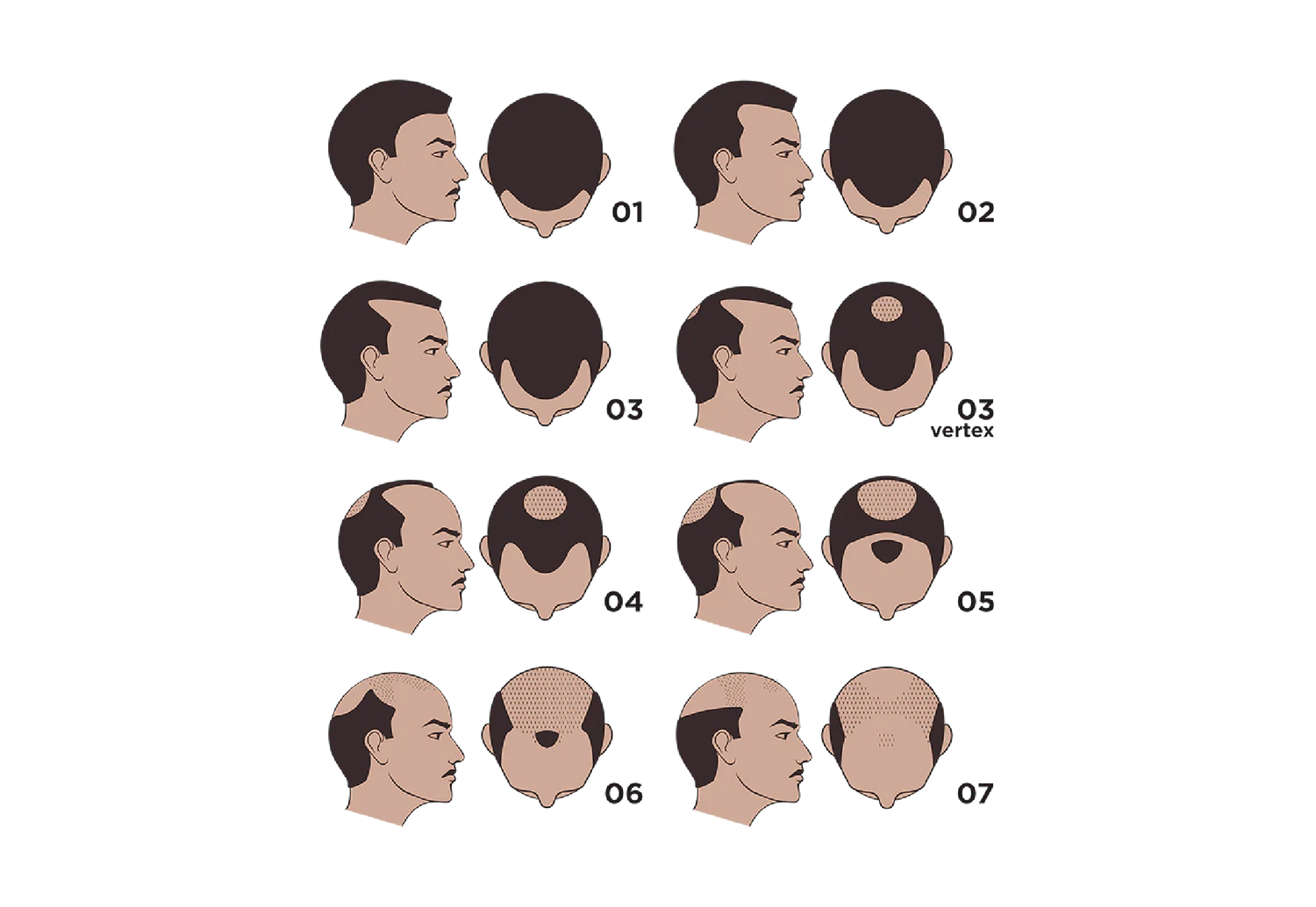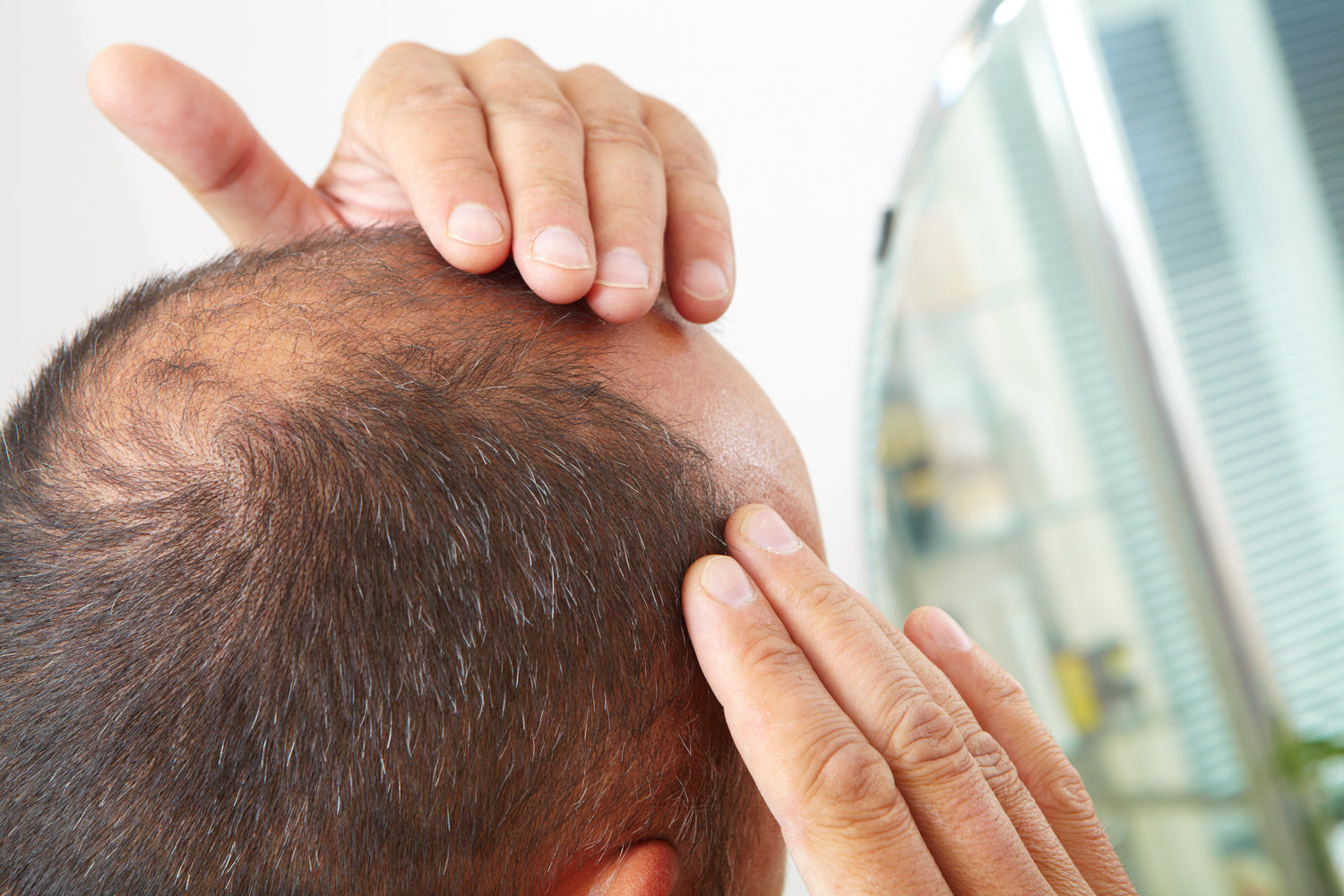What is androgenetic alopecia (AGA)?
Also known as Male Pattern Baldness, it is a condition that affects 50% of men by the age of 50. AGA is caused by a combination of genetics and hormones that leads to a typical pattern of hair loss across the scalp.

Why does it happen?
Genetics play a large role in developing AGA. People who are susceptible have increased levels of the male hormone dihydrotestosterone (DHT) in their scalp. This causes changes in their hair cycle. Eventually, these changes cause the hair follicles to become smaller (called 'miniaturisation'), producing less hairs overall and making the hairs they do produce shorter and thinner. Stress, smoking, and diet can also play a role in increasing the rate of hair loss.
The Norwood-Hamilton scale
We use the Norwood-Hamilton Scale as a way of measuring the degree of hair loss.

Stage 1: Hairline is essentially normal with no significant recession.
Stage 2: Minor recession at the temples forms a subtle “M” shape.
Stage 3: Deep recession at the temples marks the beginning of clinically significant baldness.
Stage 3: Hair loss at the crown (vertex) begins.
Stage 4: Frontal hairline recession, more pronounced vertex balding, separated by a band of hair.
Stage 5: The bridge between the front and crown thins, and bald areas start to merge.
Stage 6: The frontal and vertex baldness merges, leaving a larger bald area.
Stage 7: Only a narrow band of hair remains along the sides and back of the scalp.

Other causes of hair loss
There are many other causes of hair loss, which typically don’t present with the same gradual, patterned hair loss of AGA. These include telogen effluvium (a condition caused by stressful experiences), psoriasis or fungal infections of the scalp, autoimmune diseases affecting hair follicles, nutrient deficiencies, and certain medications, among others. These conditions won’t typically respond to the medications used to treat AGA and your doctor will screen for these in your first consultation.
